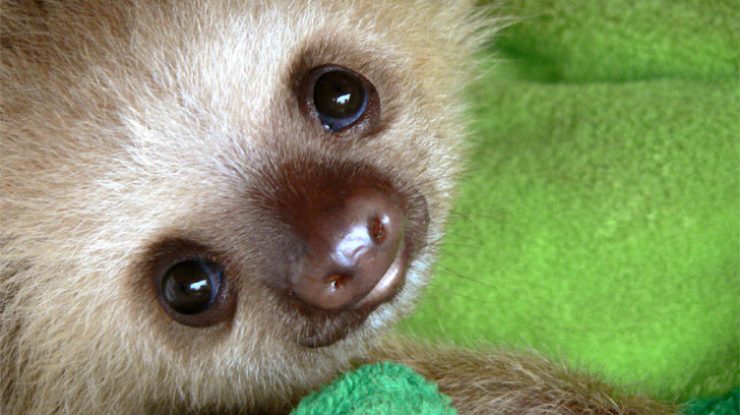Baby Sloths Speak with Sloth Squeaks
As Lucy Cooke, the creator of the website Slothville.com puts it, the sqeaks that a baby sloth makes “goes straight for your ovaries and makes you want to protect the baby sloths.” For those of us who don’t have ovaries, I would have to say it still brings out the deep natural drive to nurture a helpless creature.
In this National Geographic interview, Lucy talks about why the baby sloths squeak like this and also mentions an important tropical forest study that was conducted in Panama that suggests that sloths are one of the most successful mammals in the rainforest.
In the wild baby sloths spend the first three to six months of their lives clinging to their mothers. If they are separated from their mothers, they make this noise so that mom can find them again. The babies in the video are orphans that I filmed at the Aviarios Sloth Sanctuary. Each baby is partnered with a stuffed toy or another baby sloth so they have a snuggle partner to hug for comfort. The babies in the video, are making this noise because they have wandered away from their snuggle partner and need to find them.
What is your favorite fact about sloths?
Since they are such wonderfully eccentric creatures and so massively misunderstood, I have lots of favorite facts. I love the fact that despite the fact that they are lazy and sleepy, they are extremely successful animals. As busy bipedal apes, we are obsessed with moving faster than nature intended. But being slow is a very successful strategy. In one survey, of the rainforests in Surinam and Panama, they discovered that up to two-thirds of the mammalian biomass can be made up of sloths, which is biology speak for we’re doing pretty well thank you! Being fast is overrated.
What sorts of threats are sloths facing?
The same as most animals. Habitat destruction is probably the main threat and the reason why the pygmy sloths of Panama and the maned sloths of Brazil are both increasingly endangered.
Trafficking is also a problem with many exotic animals these days. It is very important for people to remember that these baby sloths may be cute, but they are residents of a sanctuary and will hopefully be released back into the wild when they get older. Sloths live for up to 45 years and have highly specialized diets. Most importantly though, adult wild sloths have a surprisingly large range and are solitary creatures. They would therefore lead miserable lives cooped up and kept as pets. If you love sloths, then leave them in the wild where they are happy, and help protect their homes by supporting charities like the ZSL EDGE campaign who are working to save the homes of endangered species like the pygmy and maned sloth.
If you really want a pet sloth, then you can download an APP called Adopt a Sloth, which allows you to care for your very own baby sloth, as well as learn about their biology and watch more videos. A percentage of proceeds goes towards protecting the pygmy sloth as well.
For more information about the fascinating ecosystem that exists just in the sloth’s fur alone, check out our First in a Sloth Series.

